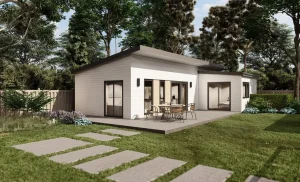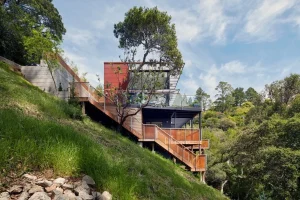Developing raw land is frequently considered a complicated investment plan, the likes of which should only be considered by so-called “experts.” Even if it’s a challenging tactic, beginning investors should be aware of undeveloped land investments. In point of fact, new investors can successfully invest in raw land if they mind due diligence and prepare themselves for more work than is typically associated with traditional exit strategies. This is because raw land investments tend to be more complex than other types of real estate investments. If for no other reason, developing undeveloped property involves a
more significant number of processes.
The real estate market provides investors with a wide variety of opportunities to pursue, including residential, multi-family, and commercial property investments, among many others.
What Is Raw Land Development?
The process of purchasing a piece of land with the intention of either developing and building on it or hanging onto it for the purpose of maximizing its value over the long term is known as raw land development. Investing in raw land can take many different forms, but it almost always results in more significant benefits than other types of investments. These benefits can come from selling the property, renting it out to generate passive income, or simply growing the value of the investment with little to no effort on the investor’s part.
How To Develop Land In 7 Steps
he reality of the situation is that undeveloped real estate has the potential to produce a stable cash flow, just like any other kind of investment opportunity.
Raw land is a scarce resource, which is excellent news for investors, as this fact alone makes it a precious asset. The value of the land you purchase in an area that is destined for development and growth will increase after you make the purchase.
Investors who want to develop undeveloped land should pay attention to their due diligence and educate themselves extensively about the market in which they intend to invest. Paying attention to the trends in the market is the most effective approach to accomplish this.
If you can follow the market’s cyclical movement, you will have a better understanding of when to make purchases. It would be best if you began by investigating the most recent changes that have occurred in the market you have chosen. If there has been a recent uptick in the number of development projects in the region, there is a good chance that purchasers will be searching for land.
1. Economic Feasibility
Assessing whether or not an investment in raw land is financially viable is the first thing to do. Before you get started with the investment, it is essential to define the return on the property that you want to achieve. This is true for any real estate investment. This is significant because it will reduce the amount of unpredictability in the market and provide a model of the expenses vs. profits element of your investment. Understanding the feasibility of your project, including the projected costs, revenue, and overall return, can help investors be successful, despite the fact that the numbers will be estimates.
2. Acquisition
You will be better able to establish the offer price if you have a clearer understanding of the charges that you are likely to encounter, including what you should receive in return. During this round of the process, investors are required to have genuine bids for the project submitted by contractors. Not only will this provide an estimate of the costs associated with the project, including the amounts that you are likely to spend, but it will also provide a maximum offer price.
3. Zoning
The third stage of raw land investing focuses mainly on the layout of the property in question. In essence, this is related to the question of what kind of building should be put on the lot, which also involves researching the zoning laws in the area.
Zoning will be a significant factor in determining how you proceed, and this factor may vary greatly depending on the sort of property you want to build or how you plan to present the property to potential purchasers. For the most part, Zoning regulations will decide what kinds of dwellings, such as single-family homes, multi-family dwellings, condominiums, or commercial establishments, can be constructed on a given property. If you’re an investor, this could make your investment strategy less effective. When first beginning to invest in raw property, it is of the utmost importance to become familiar with the surrounding area’s zoning rules.
4. Design Phase
You will need a team of professionals to design your project, you should hire architect, structural engineer, civil engineer, mechanical engineer, electrical engineer, plumbing engineer, land surveyor, geotechnical engineer, interior designer, landscape architect, etc. The total design service fee is approximately falling in range 10% to 18% of your total cost of your whole project, industry standard average cost is 15%. It is important to hire licensed professionals to design your project at the beginning of the project. People who hired non-licensed designers would face problems during plan check phase and construction phase. Remember, a good professional design can save construction cost and make construction process smoothly.
Consider strategies to improve design efficiency. Designs frequently appear efficient but contain numerous space wasters. Here are three typical instances:
- Your adversaries are intersections: In particular for single-family projects, intersections often do not increase safety or save travel time, take up space that could be used for expansion, and are expensive.
- failing to use prudent storm management: storm water management is more important and expensive than ever due to rising rainfall intensity. Early master planning consideration of storm water management can save overall costs and boost ROI.
- Variable setbacks at home: The method of modifying a home’s typical separation from curbs, property lines, or other structures is not frequently thought of or even acknowledged as an option. The ability to produce more lots per acre with fewer streets can be a useful tool, too.
A design that seems effective for a multi-phase project’s first phase may not be appropriate for later phases. For information on a property’s geologic and hydrologic features, topographic maps are crucial. They can assist you in figuring out how the property has changed over time when combined with assessment images.
5. Financing
Your plans for the property, like those for any other real estate investment, will determine the kind of financing you can secure for the purchase. The loan-to-cost ratio is the single criterion that investors should be concerned about the most (LTC). The amount of money that the lender will offer for the project is known as the LTC, and it will largely depend on the kind of development that will be done on the property as well as how it will be used. Traditional bank financing is available for owner-occupied homes, despite the majority of lenders will only pay a fraction of the expenses (usually between 80 and 85 percent).
6. Construction
Construction is the stage that comes immediately before the very end of the process of developing raw land. In most circumstances, this will involve horizontal development, such as grading for roads, curbs, and utilities, followed by the construction of the property from the ground up at some point in the future. The feature of the project that pertains to construction financing is something that investors also need to be aware of. In general, payment for the services provided by contractors will be broken down into stages corresponding to the project’s various phases. A typical practice among construction loan providers is to withhold roughly 10 percent of the total loan amount until the project is finished. Normally, the construction cost is approximately 75% to 80% of the total cost of the whole project.
7. Marketing
The marketing of the finished product is the very last phase in the process of land development. Here is when the first stage becomes highly significant in importance. When figuring up your marketing approach, it will pay you to research the neighborhood, the current price of the market, and the demand for rental properties. In addition, investors need to have a strategy for promoting the property in order to bring in potential purchasers. This may include working with a realtor, advertising in newspapers and other print media, internet listings, multiple listing services (MLS), and even social media. Real estate developers can also team up with real estate agents to market and sell their products.
How Superb Engineer Can Assist You
The Superb Engineer company offers exceptional consulting services with a hands-on approach. Superb Engineer specializes in providing site planning, land surveying, engineering design, feasibility study and construction management. We can assist your development project from step 1 until step 7 with out outstanding resources and expertise!



